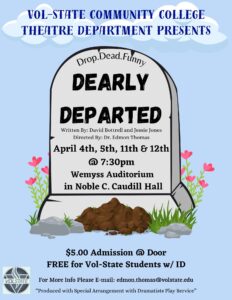Last updated on March 9, 2019
By Lauren Fraine
February is Black History Month and during Unity Week at Volunteer State Community College, “Red Line” will be displayed in the Wood Campus Center in the International Hall and Suite 217 until Feb. 15.
Barbwire, oil paints and panel are elements within “Red Line: The Art of Omari Booker.”
A Nashville native, local artist Omari Booker grew up in Tennessee.

Booker attended high school at Montgomery Bell Academy and graduated from Tennessee State University with a Bachelor of Science in Graphic Design.
The practice of redlining is the inspiration behind this exhibit.
The Merriam-Webster dictionary describes redlining as “the illegal practice of refusing to offer credit or insurance in a particular community on a discriminatory basis (as because of the race or ethnicity of its residents).”
In 1934, the Federal Housing Act was established in efforts to stabilize the economy out of the Great Depression.
Its purpose was to aid in home ownership and suburban development, but not every community reaped the same benefits as the other.
City maps were drawn that have different color outlines around different communities, the “redlined” ones being deemed the most undesirable because of their racial and ethnic demographics that made up these neighborhoods.
“When you look at those maps, you’ll see green lines, blue lines, yellow lines, and red lines,” explains Booker.
Loans for home ownership in low-income and minority communities inside these redlines were made unavailable or too expensive.
“The Red Line exhibit kind of looks at how race and also housing can impact every aspect of life, every aspect of justice … of social injustice, that was all sparked by looking at that practice,” Booker said.
The abrasive material of the barbwire in Booker’s art expresses the barricades that were formed on a discriminatory basis.
Two paintings set up in the Wood Campus Center caught my eye, said student Alexis Armour.
“I saw this picture, then I recognized the other ones. They have the same circle, but no faces, so I’m wondering if that has a meaning,” said Armour.
The paintings that Armour is referring to also have barbwire, one red and one green, surrounding two different colored circles.
“The first one was green and the inside was kind of a flesh panel and it was a white flesh panel because part of that same time when redlining started, they put green lines around areas that had really good property value and were pretty much reserved for white business owners or business people in more affluent neighborhoods. At least neighborhoods that had the ability to move into. That’s why I used the green line and then the red line, to illustrate that circle around minority neighborhoods,” said Booker.
Through his art, Booker educates and recognizes the struggles that come with social injustice.
Black History Month is a time to acknowledge the importance of African-Americans in our country and how they have changed history.




Comments are closed.